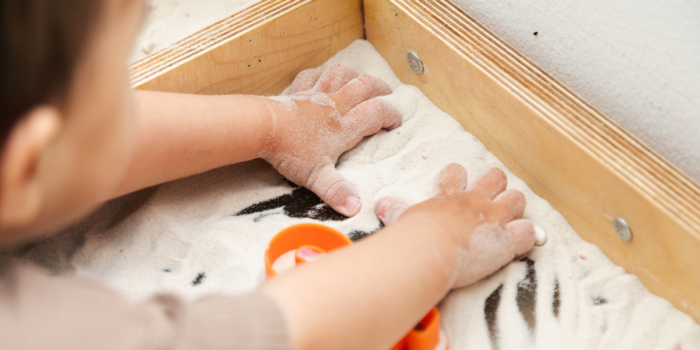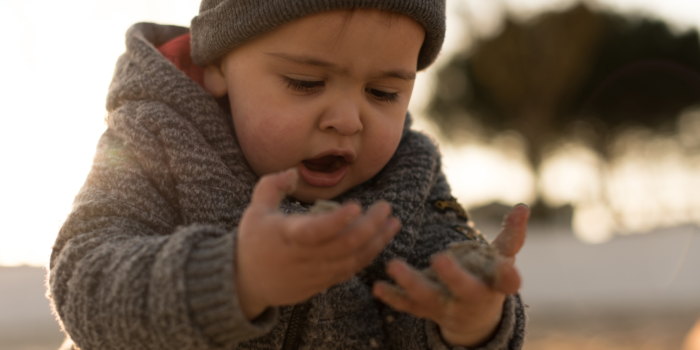Toddler Development: What you Need to Know About Your Child’s Unique Needs

It’s incredible how quickly my baby transformed into a little toddler! Toddlers go through a whirlwind of changes as they move from infancy to early childhood, experiencing rapid development that shapes their emotional, physical, and cognitive growth. During this crucial time, they’re learning to walk and talk while also forming their first impressions of themselves and the world around them.
The toddler stage is an exciting time filled with endless curiosity, growing independence, and the beginning of deeper emotional experiences. While meeting their basic needs is crucial for survival, it’s equally important to pay attention to their more intricate needs – such as establishing secure attachments, encouraging exploration, and providing opportunities for emotional expression. These elements play a vital role in shaping a toddler’s sense of trust, security, and confidence, laying the foundation for their future developmental milestones.
Meeting the unique needs of toddlers can be quite a challenge, especially in the midst of our busy lives and daily chaos. However, when parents and caregivers take the time to truly understand and nurture these aspects of toddler development, they are laying the groundwork for their child’s lifelong emotional well-being, social adeptness, and ability to learn and adapt. Understanding and meeting these needs can transform the parenting journey into a profound experience of connection and growth, benefiting both the child and the parent.
In this blog post, we’ll explore these often-overlooked needs, diving into the ways that caregivers can support their toddlers beyond just the basics. We’ll discuss how fostering secure attachments, encouraging exploration, and validating emotions are all vital to raising a well-rounded, resilient, and confident child. By the end, you’ll have a richer understanding of what it means to truly nurture toddler development and how these early years set the stage for a lifetime of learning and thriving.
Understanding Toddler Development:
Between the ages of 1- and, toddlers are at a critical developmental stage, where their experiences play a big role in shaping their emotional, psychological, and social growth. To really grasp a toddler’s distinct needs, let’s look at a few different developmental theories.
Erik Erikson’s Early Development Stages
Trust vs. Mistrust (Birth to 18 Months):
During the first stage of Erik Erikson’s theory of psychosocial development, which spans from birth to about 18 months, infants and toddlers are navigating the “Trust vs. Mistrust” stage. This stage is foundational to a child’s future emotional well-being. It is centered around the idea that infants learn to trust or mistrust the world based on the consistency and quality of care they receive from their caregivers.
Building Trust: In this stage, when caregivers consistently meet the child’s basic needs—such as feeding, comforting, and providing affection—the child develops a sense of trust. This trust doesn’t just apply to the caregivers but also extends to the broader world. It forms the foundation for a secure and stable personality, giving the child the confidence to explore their environment and interact with others.
Consequences of Mistrust: Conversely, if caregivers are neglectful, inconsistent, or harsh, the child may develop a sense of mistrust. This can lead to feelings of insecurity, fear, and anxiety, which might manifest as difficulty in forming healthy relationships and challenges in emotional regulation later in life.
Autonomy vs. Shame and Doubt (18 Months to 3 Years):
As toddlers grow and enter the second stage of Erikson’s theory, they begin to develop a sense of autonomy. This stage, known as “Autonomy vs. Shame and Doubt,” typically occurs between 18 months and three years of age. During this period, toddlers are learning to assert their independence by making choices and engaging in activities that foster a sense of self-control.
Fostering Autonomy: At this stage, toddlers start to explore their abilities by attempting tasks such as dressing themselves, choosing their toys, or deciding what they want to eat. When caregivers encourage and support these efforts, it helps the child build confidence in their abilities, leading to a sense of autonomy and independence.
Risks of Shame and Doubt: However, if caregivers are overly critical, controlling, or discouraging, toddlers may begin to feel ashamed of their efforts or doubt their abilities. This can result in a lack of confidence and a fear of trying new things, which can hinder their development of a healthy sense of autonomy.
Balancing Autonomy and Trust: The relationship between these two stages is essential. As little ones start to find their independence, the trust formed in the earlier stage acts as a safe foundation from which they can venture out on their own. By offering unwavering support alongside opportunities for growth, caregivers empower toddlers to conquer this phase, nurturing a strong self-identity and the courage to embrace new adventures.
Jean Piaget’s Cognitive Development Theory
Jean Piaget’s theory focuses on how children develop their cognitive abilities through stages. During the toddler years, children are in the “Sensorimotor Stage,” where they learn about the world through their senses and actions.
Learning Through Sensory Experiences:
Understanding this stage helps caregivers recognize the importance of providing hands-on, sensory-rich experiences that stimulate cognitive development. For example, activities like stacking blocks, playing with water, or exploring different textures can support a toddler’s learning about cause and effect, spatial awareness, and problem-solving. These activities encourage toddlers to interact with their environment in meaningful ways, fostering cognitive growth and curiosity.
Piaget’s theory is crucial because it highlights how children actively construct their understanding of the world through exploration and interaction. By encouraging activities that promote sensory exploration, caregivers support the child’s growing ability to understand cause and effect, problem-solving, and other foundational cognitive skills that are vital for later learning.

Lev Vygotsky’s Social Development Theory
Lev Vygotsky emphasized the role of social interaction in cognitive development, introducing the concept of the “Zone of Proximal Development” (ZPD). This is the range of tasks that a child can perform with the help of a more knowledgeable person, such as a caregiver or peer.
Guided Learning and Independence:
For toddlers, learning is most effective when caregivers provide just enough assistance to help them achieve new tasks, gradually reducing help as the child becomes more competent. This approach fosters independence while ensuring that the child feels supported. For instance, a caregiver might help a toddler put together a simple puzzle, gradually stepping back as the child becomes more adept at completing it independently.
Vygotsky’s theory underscores the role of social interaction in cognitive growth. Understanding this helps caregivers to provide appropriate support that challenges the child just enough to foster new skills while still being achievable. This approach not only accelerates learning but also builds the child’s confidence and independence, which are critical for their ongoing development and readiness for more complex tasks in the future.
Albert Bandura’s Social Learning Theory
Albert Bandura’s theory highlights the importance of modeling and observational learning. Toddlers learn social behaviors, such as sharing and cooperation, by observing the actions of others, particularly their caregivers.
Modeling Positive Behaviors:
Caregivers can use this theory by modeling positive behaviors and reinforcing them when the child imitates these actions. For instance, a caregiver who consistently demonstrates empathy and patience is likely to see these traits develop in their child. When toddlers observe their caregivers engaging in positive social interactions, they are more likely to replicate these behaviors, which contributes to their social and emotional development.
Bandura’s theory is significant because it emphasizes the power of observation in learning. By demonstrating and reinforcing desirable behaviors such as sharing, empathy, and cooperation, caregivers can shape the child’s social skills and moral development. This is crucial for forming the basis of the child’s future interactions and relationships.
Attachment Theory and Its Importance:
Closely related to Erikson’s concept of trust is attachment theory, developed by John Bowlby and further expanded by Mary Ainsworth. Attachment theory emphasizes the importance of the early bond between a child and their primary caregiver, typically the mother or father, in shaping the child’s emotional and social development.
Secure Attachment:
When a caregiver is tuned in and responsive to their child’s needs, it creates a strong bond of security and trust. This means the child feels safe, understood, and valued. A child with a secure attachment is more likely to boldly explore their surroundings, secure in the knowledge that they have a comforting presence to return to when needed. This sense of security is vital for healthy cognitive and social development during the toddler years.
Insecure Attachment:
On the other hand, if a caregiver is inconsistent, unavailable, or emotionally distant, the child may develop an insecure attachment. As a result, the child may become overly dependent, anxious, or avoidant. This could also impact their self-esteem, trust in others, and their ability to manage emotions. Such insecurity might affect their capacity to build healthy relationships and can have a lasting impact on their overall development.
Why These Theories Matter for Toddlers:
Understanding these developmental stages and theories emphasizes why it’s so crucial to meet toddlers’ unique needs beyond just the basics of food, sleep, and hygiene. The emotional and psychological support provided during these early years lays the groundwork for how toddlers perceive themselves, others, and the world around them.
Trust and Exploration:
A toddler who has developed trust and a secure attachment will feel more confident in exploring their surroundings, trying new things, and asserting their independence. This exploration is essential for developing motor skills, cognitive abilities, and social competence.
Emotional Security:
Secure attachment and trust foster emotional security, which is vital for toddlers as they begin to navigate the complex world of emotions. Emotional security helps them manage stress, build resilience, and establish healthy social interactions.
Lifelong Impact:
The foundations of trust and attachment formed during these early years will influence a child’s ability to form relationships, handle challenges, and develop a strong sense of self throughout their life.
By considering these concepts, caregivers can better understand the importance of nurturing not only a toddler’s physical needs but also their emotional and psychological needs. Doing so helps ensure that toddlers grow into secure, confident, and emotionally healthy individuals.

7 Unique Needs Every Toddler Has
1. The Need for Physical Touch and Connection
Physical touch is more than just a way to comfort your toddler; it’s a fundamental aspect of their emotional and neurological toddler development. Regular, loving touch, such as hugs, cuddles, and even holding hands, releases oxytocin—often referred to as the “love hormone”—which promotes feelings of bonding and attachment. This physical connection helps toddlers feel secure, valued, and loved, which is critical as they navigate the world around them. Touch also has a soothing effect, helping to regulate a toddler’s emotions and reduce stress.
In the “Trust vs. Mistrust” stage, physical touch and affection are foundational in establishing trust. When toddlers receive consistent and loving touch, they learn that their caregivers are reliable and responsive to their needs, fostering a secure attachment.
Tips for Parents:
- Include Physical Closeness in Daily Routines: Use moments like diaper changes or reading a book together to provide affectionate touch.
- Prioritize Bedtime Routines: Offer a gentle back rub or hold your toddler close while singing a lullaby to reinforce feelings of security before sleep.
- Use Playful Touch: To make touch enjoyable and part of your interactions, engage in games that involve physical contact, like tickling, gentle roughhousing, or playing “catch me. “
- Create Rituals: To build a consistent connection, develop daily rituals that include touch, such as a high five, a special handshake, a goodnight hug, or a morning cuddle.
- Respond to Cues: Pay attention to your toddler’s cues and respond with appropriate touch, such as offering comfort when they are upset or playing when they are energetic.
2. The Freedom to Explore and Be Active
Toddlers are always on the move, driven by their natural curiosity to discover the world around them. This exploration is not just a way to satisfy their curiosity but it’s also a vital part of toddler development. Whether they’re climbing, running, or jumping, these physical activities help toddlers not only build their strength and coordination but also foster their cognitive growth. Through active exploration, they learn about cause and effect, spatial relationships, and problem-solving, all while having fun.
The freedom to explore fosters a sense of independence and confidence, which is important in Erikson’s “Autonomy vs. Shame and Doubt” stage. Additionally, secure attachment is reinforced when toddlers know they can explore while having their caregiver nearby for support.
Tips for Parents:
- Provide a Safe Environment: Ensure that areas of your home are baby-proofed to allow your toddler to explore freely without constant restrictions, fostering their independence.
- Create Opportunities for Supervised Risk-Taking: Encourage activities like climbing a small play structure or navigating stairs with your assistance to promote confidence and physical skills.
- Utilize Outdoor Spaces: Parks, backyards, or nature walks offer your toddler endless opportunities for physical activity and exploration.
- Encourage Active Play: Engage in games that involve running, jumping, or throwing to support their physical development and motor skills.
- Offer Praise for Efforts: Acknowledge your toddler’s achievements and efforts during active play and exploration to boost their confidence.
3. Opportunities for Independence
Toddlers are in a phase where they begin to recognize themselves as separate individuals, leading to a strong desire to assert their independence. They’re eager to take charge, whether it’s picking out their own outfits or learning to feed themselves. These opportunities for independence are not just about essential life skills but also about boosting their self-confidence and fostering their sense of autonomy. When toddlers are given the chance to make choices and achieve tasks independently, they gain confidence and learn to trust their abilities. Plus, it also strengthens their secure attachment as they feel supported in their efforts to become more independent.
Tips for Parents:
- Offer Simple Choices: To foster your toddler’s sense of autonomy, allow them to make decisions, such as choosing between two outfits or between two snacks.
- Encourage Task Participation: Support your toddler in trying tasks like putting on their shoes or helping with simple chores, such as setting the table or putting away toys.
- Focus on the Process: Understand that these activities may take longer and might not be perfect; emphasize the learning experience and effort over the outcome.
- Celebrate Efforts: Acknowledge and praise your toddler’s attempts and achievements to build their confidence and sense of accomplishment.
- Provide Gentle Guidance: Offer support and encouragement as needed, helping your toddler navigate tasks without feeling frustrated.

4. Social Interaction and Play
Social interaction is absolutely crucial for toddlers’ growth and development. When they play and engage with other kids and adults, they learn important skills like sharing, taking turns, understanding others’ feelings, and expressing empathy. Playtime is also a fantastic way for toddlers to learn new words, practice communicating, and grasp the rules of social interaction. Plus, it’s through social play that they start to develop empathy and learn to see things from other people’s perspectives, which are key parts of emotional intelligence.
Furthermore, when toddlers interact with others, they not only gain social skills but also boost their confidence and competence in social situations. These interactions reinforce secure attachments as they learn how to navigate relationships with others while still having a strong, supportive bond with their caregivers.
Tips for Parents:
- Arrange Playdates or Toddler Groups: Set up opportunities for your child to interact with peers, allowing them to observe and mimic positive social behaviors.
- Engage in Interactive Play at Home: Model social skills like sharing, cooperation, and appropriate emotional expression during playtime with your child.
- Participate in Family Activities: Play family games or engage in group storytelling to foster social interaction and strengthen bonds within the family.
- Encourage Social Skills: Use playtime to teach and reinforce social behaviors, helping your child learn to navigate relationships effectively.
- Model Empathy and Emotional Expression: Show your child how to express feelings and respond to others’ emotions. For instance, narrate your own feelings and reactions during interactions.
- Promote Communication Skills: Support language development by talking with your child about their day, asking open-ended questions, and encouraging them to express their thoughts and feelings.
- Provide Positive Reinforcement: Offer praise and encouragement when your child engages in positive social behavior, such as sharing or helping others, to reinforce these behaviors.
5. Consistent Routines and Boundaries
Toddlers absolutely thrive on routine and consistency! These two things provide them with a sense of security and predictability in their daily lives. Consistent routines help toddlers understand what to expect, reduce anxiety, and help them feel in control of their environment. On top of that, clear and consistent boundaries teach toddlers about acceptable behavior and help them understand the consequences of their actions. This structure is crucial for emotional regulation and helps toddlers develop self-discipline. Not only that but routines and boundaries reinforce their sense of safety and trust in their caregivers.
Tips for Parents:
- Establish a Daily Routine: Include regular times for meals, naps, play, and bedtime to create a comforting rhythm and help your toddler transition smoothly between activities.
- Use Gentle but Firm Boundaries: Guide behavior with clear and consistent expectations. For example, consistently follow a bedtime routine with specific steps like bath, story, and bed to help your toddler wind down for sleep.
- Be Clear and Consistent: When setting boundaries, explain them clearly to your toddler, reinforcing what is expected and why.
- Offer Explanations: Help your toddler understand the reasons behind routines and rules to make them feel more secure and informed.
- Adjust Routines as Needed: Be flexible and adapt routines as your toddler grows and their needs change while maintaining consistency in overall structure.
- Use Visual Schedules: Create a visual schedule with pictures to help your toddler understand and anticipate daily routines. This can make transitions smoother and give them a sense of control.
- Incorporate Routine-Based Cues: Use consistent verbal or visual cues to signal transitions, such as singing a specific song before bedtime or using a special phrase before naptime.
- Create Rituals: Develop simple rituals or traditions around daily activities, like a special goodnight hug or a morning dance, to provide comfort and reinforce routines.
- Be Patient with Transitions: Allow extra time for transitions between activities and offer reassurance to help your toddler adjust without stress.
6. Sensory Stimulation
Toddlers are like little explorers, soaking in everything the world has to offer through their senses. By giving them plenty of opportunities to touch different textures, hear various sounds, and taste new flavors, we’re actually helping their brains grow and develop. These sensory experiences are not just fun and games—they’re essential for boosting cognitive and motor skills. These positive experiences also play a big part in their emotional development and help strengthen their bond with their caregivers.
Tips for Parents:
- Offer a Variety of Sensory-Rich Activities: Engage your toddler’s senses with activities like playing with different textures (sand, water, playdough), listening to music with varied rhythms and instruments, or exploring nature (feeling leaves, smelling flowers, observing wildlife).
- Use Sensory Bins: Fill bins with items like rice, beans, or small toys for exploratory play. These bins can provide hours of sensory fun and help with fine motor skills.
- Change Up Sensory Experiences Regularly: Introduce new sensory experiences to keep your toddler engaged and support their ongoing development.
- Incorporate Sensory Exploration into Daily Routines: Use everyday moments for sensory play, such as cooking with different textures in the kitchen or observing nature during walks.
- Create Sensory Stations: Set up different areas in your home where your toddler can engage in various sensory activities, allowing them to choose and explore at their own pace.
- Encourage Sensory Exploration with Safe Materials: Ensure that all materials used for sensory activities are safe and appropriate for your toddler’s age to prevent choking hazards or other accidents.
- Observe and Adapt to Your Toddler’s Interests: Pay attention to what sensory activities your toddler enjoys most and provide more of those experiences to support their individual preferences and development.

7. Emotional Support and Validation
Toddlers are just beginning to understand and express their emotions, which can often feel overwhelming to them. They need support and validation to help them navigate these big feelings. When caregivers acknowledge and validate a toddler’s emotions—whether it’s frustration, joy, fear, or anger—they learn that it’s okay to feel the way they do. Plus, when we put words to their feelings, it helps them express themselves in a more positive way. This emotional support is crucial for developing healthy emotional regulation and a positive sense of self. When caregivers consistently recognize and respond to a toddler’s emotions with empathy, the child feels secure and valued, laying the foundation for strong emotional health. By responding to and supporting their emotional needs, caregivers strengthen the secure attachment and foster a sense of security and understanding in the child.
Tips for Parents:
- Get on Their Level Physically and Emotionally: When your toddler expresses emotions, kneel or sit at their level to make them feel heard and understood.
- Acknowledge Their Feelings: Validate their emotions by naming them, such as saying, “I see that you’re feeling sad because your toy broke.” This helps them recognize and label their feelings.
- Offer Comfort and Reassurance: Provide comfort through a hug, soothing words, or simply being present. Reassure them that their feelings are valid and that they are not alone.
- Encourage Emotional Expression: Ask gentle questions to help your toddler express their feelings, like, “Can you show me what’s making you upset?” or “What made you feel happy today?”
- Respond Consistently with Empathy: Always respond to their emotions with empathy to help your child understand that all emotions are normal and manageable.
- Help Build Emotional Vocabulary: Use language that describes emotions to help your toddler build a vocabulary for their feelings and understand different emotional states.
- Model Emotional Management: Demonstrate how you healthily manage your own emotions, showing your toddler how to handle feelings constructively.
Conclusion: Nurturing the Whole Child
Embracing the toddler years with a holistic approach can transform these early years into a foundation for lifelong growth. Now that you understand the crucial needs your toddler has, it’s time to put this knowledge into action. Start by creating a nurturing environment that supports their physical, emotional, and cognitive development.
Consider setting aside time each day for activities that encourage exploration and choice, and make sure to celebrate their small achievements and feelings. Share these insights with other caregivers in your child’s life to ensure a unified approach to their development.
Reflect on how you can adapt your strategies to meet their evolving needs and turn challenges into opportunities for growth. Remember, every step you take today builds the path for their future confidence and resilience.
Share your experiences and strategies with our community! How are you applying these principles in your daily life? What changes have you noticed in your child’s behavior and development? Let’s continue this journey together and support each other in nurturing the whole child.

How do the developmental theories apply to your toddler’s current behavior and needs, guide your approach to teaching and interacting with them, inform your strategies for supporting their learning and problem-solving skills, and impact your approach to building a secure relationship?
How do you balance meeting your toddler’s seven needs—connection, safety, independence, routine, play, communication, and learning? Are there certain needs that you feel more confident in fulfilling, and others where you might need to focus more attention?
What are some potential challenges or obstacles you might face in addressing your toddler’s seven needs, and how can you proactively develop solutions or strategies to overcome them? What resources or support systems could you utilize to assist in this process?
How can you assess and adjust your own expectations and responses to better align with your toddler’s developmental stage and needs? What strategies can you use to ensure that your approach remains flexible and responsive to their evolving requirements?




